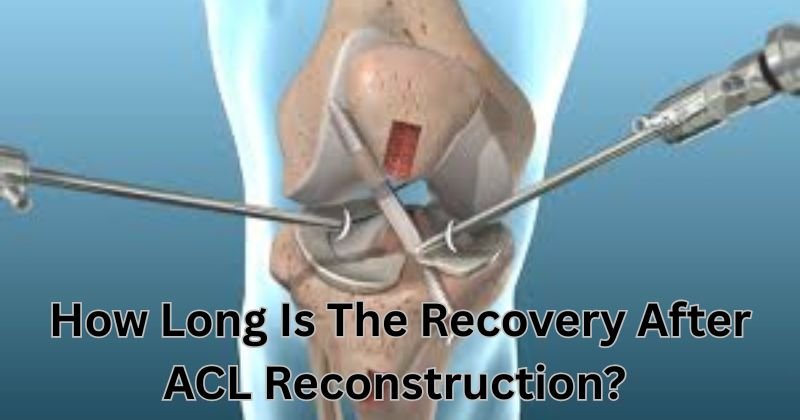ACL reconstruction surgery is a significant procedure that involves reconstructing the anterior cruciate ligament (ACL) in the knee, which is crucial for stabilizing the joint. The recovery time after ACL surgery varies depending on factors like the individual’s health, the type of surgery performed, and their commitment to rehabilitation. Let’s break down the stages of recovery and provide a comprehensive ACL reconstruction surgery recovery timeline.
Understanding ACL Reconstruction Surgery
ACL injuries are common, particularly in athletes and individuals who engage in sports that require sudden movements such as twisting, pivoting, or jumping. When the ACL is torn, it can lead to instability and pain in the knee. ACL reconstruction surgery is performed to restore the stability of the knee, allowing the patient to return to normal activities, including sports. The surgery typically involves removing the damaged ACL and replacing it with a graft, which could be from the patient’s own tissue or a donor.
Immediate Recovery After ACL Reconstruction
The first few days following ACL reconstruction surgery are generally spent managing pain and swelling. This phase is critical to lay the foundation for a smooth recovery. Immediately after the surgery, patients will likely experience discomfort, bruising, and swelling, which are normal responses. Here’s a breakdown of what to expect in the first week:
- Post-Surgery Care: You’ll be given specific instructions to care for the surgical site. Ice packs and elevation of the leg help manage swelling and pain. Medications will also be prescribed to alleviate discomfort.
- Knee Mobility: Early rehabilitation usually involves gentle range-of-motion exercises, aimed at preventing the knee from becoming too stiff. However, high-impact activities are avoided at this stage.
- Weight Bearing: Depending on the type of surgery and your surgeon’s recommendations, you may or may not be able to put weight on the knee initially. Some patients use crutches or a knee brace to aid mobility.
The First Month: Early Rehabilitation
The first month post-surgery is focused on regaining basic knee functions such as bending the knee and walking. A critical aspect of recovery during this phase is physical therapy, which begins within the first few days or weeks after surgery. Here’s what you can expect:
- Physical Therapy: The rehabilitation process begins with exercises that help improve knee flexibility and strength. Your therapist will guide you through specific exercises to strengthen the muscles surrounding the knee and improve stability.
- Knee Motion: A major goal during this phase is to restore the knee’s range of motion. You should work on straightening and bending the knee without experiencing pain.
- Minimal Weight Bearing: By the end of the first month, you may begin bearing more weight on the operated leg. This should be done with guidance from your healthcare provider or physical therapist.
Three to Six Months: Gaining Strength and Function
The ACL reconstruction surgery recovery timeline from three to six months marks a crucial phase in your rehabilitation. During this period, your body begins adapting to the new graft, and the focus shifts from regaining motion to rebuilding strength and stability. Here’s what to expect:
- Stronger Muscles: After a few months, the muscles surrounding your knee (especially the quadriceps and hamstrings) begin to regain their strength. This is important because strong muscles will help support the new ligament.
- Increase in Activity: As your strength improves, you can start to increase the intensity of your exercises. Your physical therapist will introduce more complex movements, such as light jogging or balance exercises, to further challenge your knee and help with stability.
- Continued Therapy: Physical therapy continues throughout this period to improve endurance and further strengthen the knee. It’s important to follow your therapist’s advice carefully and not rush the process.
Six to Nine Months: Return to Sports
By six to nine months after surgery, most patients are able to return to lower-impact activities, and in some cases, even sports, although the return to full participation should be gradual. The graft continues to strengthen, and your body adapts to the changes. Here’s what you can expect:
- Sport-Specific Exercises: As your strength and confidence increase, you may begin sport-specific rehabilitation, which can involve exercises that mimic the movements of the sport you plan to return to.
- Gradual Return: It’s essential to gradually return to sports, beginning with non-contact activities. High-impact sports, such as soccer, basketball, or football, may need to be delayed until the knee is fully stable and strong.
- Psychological Factors: Some patients experience anxiety about returning to sports, fearing reinjury. It’s normal, but working closely with your therapist can help you overcome these fears and build confidence.
Nine to Twelve Months: Full Recovery
The ACL reconstruction surgery recovery process can take up to a year for a full recovery. By the 9 to 12-month mark, many patients feel fully recovered and able to resume all activities, including high-impact sports. Here’s what to expect during this phase:
- Full Functionality: The knee should be functioning well, with nearly equal strength and flexibility to the non-surgical leg. Any residual pain or swelling should be minimal, if present at all.
- Advanced Sports: High-intensity sports and activities can typically be resumed, provided that the knee is strong enough to handle the demands. However, athletes should always consult with their surgeon before returning to competitive sports.
Conclusion
Recovery from ACL reconstruction surgery is a gradual process that requires patience, commitment, and a structured rehabilitation plan. While everyone’s timeline can vary, the typical recovery process spans from six months to a year, depending on the individual. By following the recommended ACL reconstruction surgery recovery timeline, you can ensure that your knee heals properly and that you return to your normal activities with strength and confidence. Always work closely with your surgeon and physical therapist to ensure a safe and effective recovery journey.
for more(click here)




